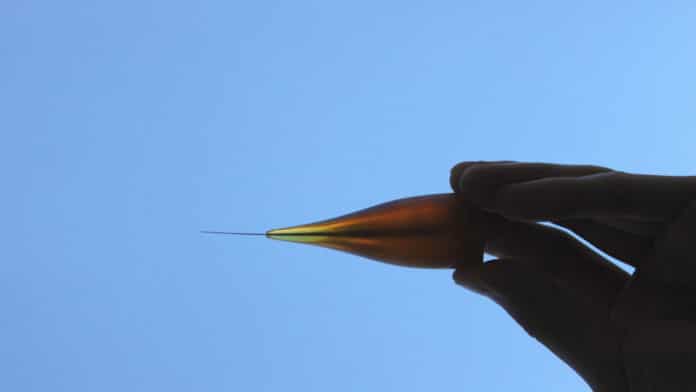Platinum, copper, nickel, and phosphorous – are the components of an amorphous metal alloy with excellent mechanical properties.
Now three scientists from EPFL’s Laboratory of Photonic Materials and Fiber Devices (FIMAP) have given it a new purpose: they are using it to make electrodes for plastic fibers.
Ph.D. student Inès Richard said, “Our metallic glass is part of a new category of metals with an amorphous structure. When the alloy is heated to a certain temperature, it first turns viscous and then becomes crystalline and solid.”
“The advantage is that while the alloy is in a viscous state, it can be stretched into a nanometric-sized, uniform shape that runs the length of the fiber. That’s a step up from the crystalline metals that are normally used – they’re stretched while in a liquid state, which means they can break into droplets if their diameter gets too small.”
Professor Fabien Sorin said, “Thanks to this alloy and our work with Professor Vasiliki Tileli, who provided further insight into how the process works, we were able to create a very thin, electrically conductive fiber. It’s just 40 nanometers thick – that’s about 50 times smaller than a standard electrode fiber.“
Postdoc Wei Yan said, “Because the alloy is viscous, it can be combined with another liquid during the production process without the two mixings. We added liquid selenium, which can detect light. The alloy is highly conductive, and because thanks to the high quality of the interface between both materials, it also enhanced the fiber’s performance and sensitivity.”
Richard said, “We also worked with Professors Stéphanie Lacour and Grégoire Courtine to test our metallic glass fibers on rats.”
Scientists developed a method for integrating the electrodes into chronic implants. Then Courtine’s lab tested the implants’ functionalities on rats. His researchers sent electrical impulses directly into the rats’ brains, causing them to move, and recorded the signals from their neurons. The metallic glass fibers developed at EPFL are designed for use in biomedical devices and electronics.
Journal Reference:
- Yan, W., Richard, I., Kurtuldu, G. et al. Structured nanoscale metallic glass fibers with extreme aspect ratios. Nat. Nanotechnol. (2020). DOI: 10.1038/s41565-020-0747-9
